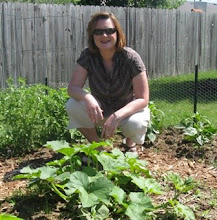What I do is hike along with my National Audubon Society Field Guide to North American Wildflowers (Eastern Edition) and a pencil and my digital camera. Whenever I find a wildflower, I use the book to identify it then pencil into my book where and when I found it. Then I try to get a shot of it with my camera. This year I also picked up a brochure put out by the park. The brochure confirmed most of my ID's and in some cases listed a slightly different variety of the flower than what I'd thought.
Anyway, here's what I found in bloom this year:
This first one is Wild Geranium (Geranium maculatum) which grows everywhere!

Another flower that was prolific this year was the Celandine Poppy (Stylophorum diphyllum) which is also known as the Wood Poppy.

Bordering the hiking trail on the hills near the creekbed were hundreds of these flowers. They're called Shooting Star (Dodecatheon meadia). The identification book listed them with the pink flowers, but almost all of the ones I saw were white like this.

This dark purple flower was also popping up everywhere. It's called Spring Larkspur (Delphinium tricorne).

Lots of this Blue Phlox (Phlox divaricata) everywhere.

May in Indiana means it is Mayapple (Podophyllum peltatum) time. These little table-like green plants carpet the forest floor and in May a little white bloom opens up in the space between the two leaves.

This next one is one of my favorites, but I've had trouble pegging down the name. Based on the info in my identification book, I thought it was called Toadshade (Trillium sessile) or Red Trillium. The brochure I got from the park, however, identifies it as Prairie Trillium (Trillium recurvatum). I guess it is six of one, half a dozen of the other since there is very little difference. At first it is kind of hard to see these as the blooms are fairly dark and can blend into the leaves and other dark plants on the forest floor. But once your eyes get trained, you see them everywhere.

Here's another one that is hard to see because it folds over on itself. The purplish-brown part of the flower is hidden by the green exterior. It's called Jack-in-the-Pulpit (Arisaema triphyllum).

Well, there are a few others, but this post is probably graphics-intensive enough. I apologize to all those on dial-up.


No comments:
Post a Comment